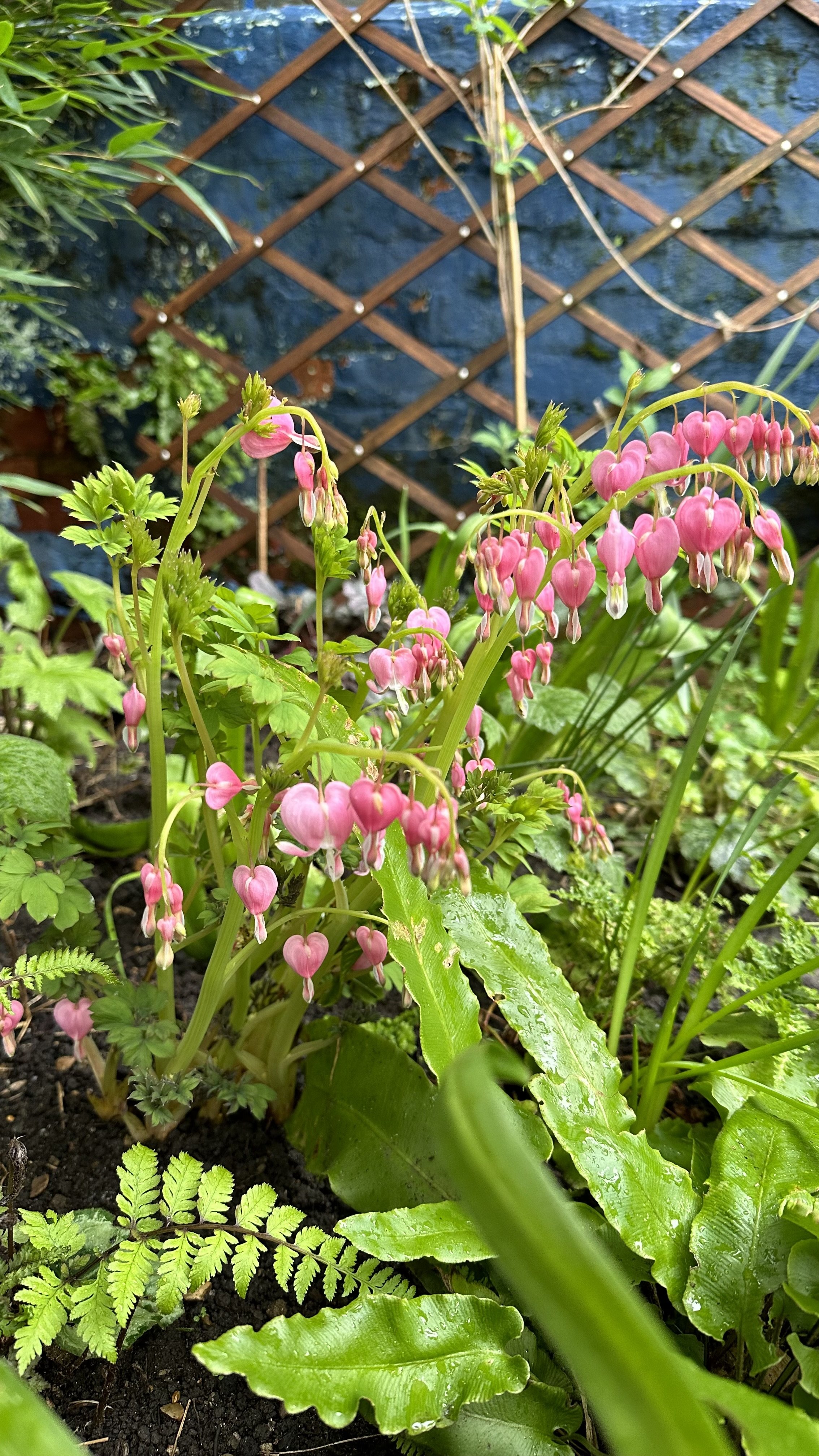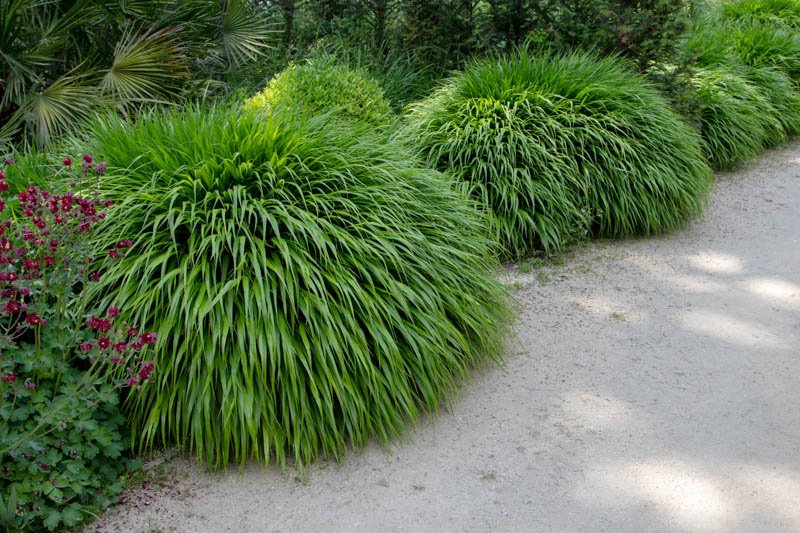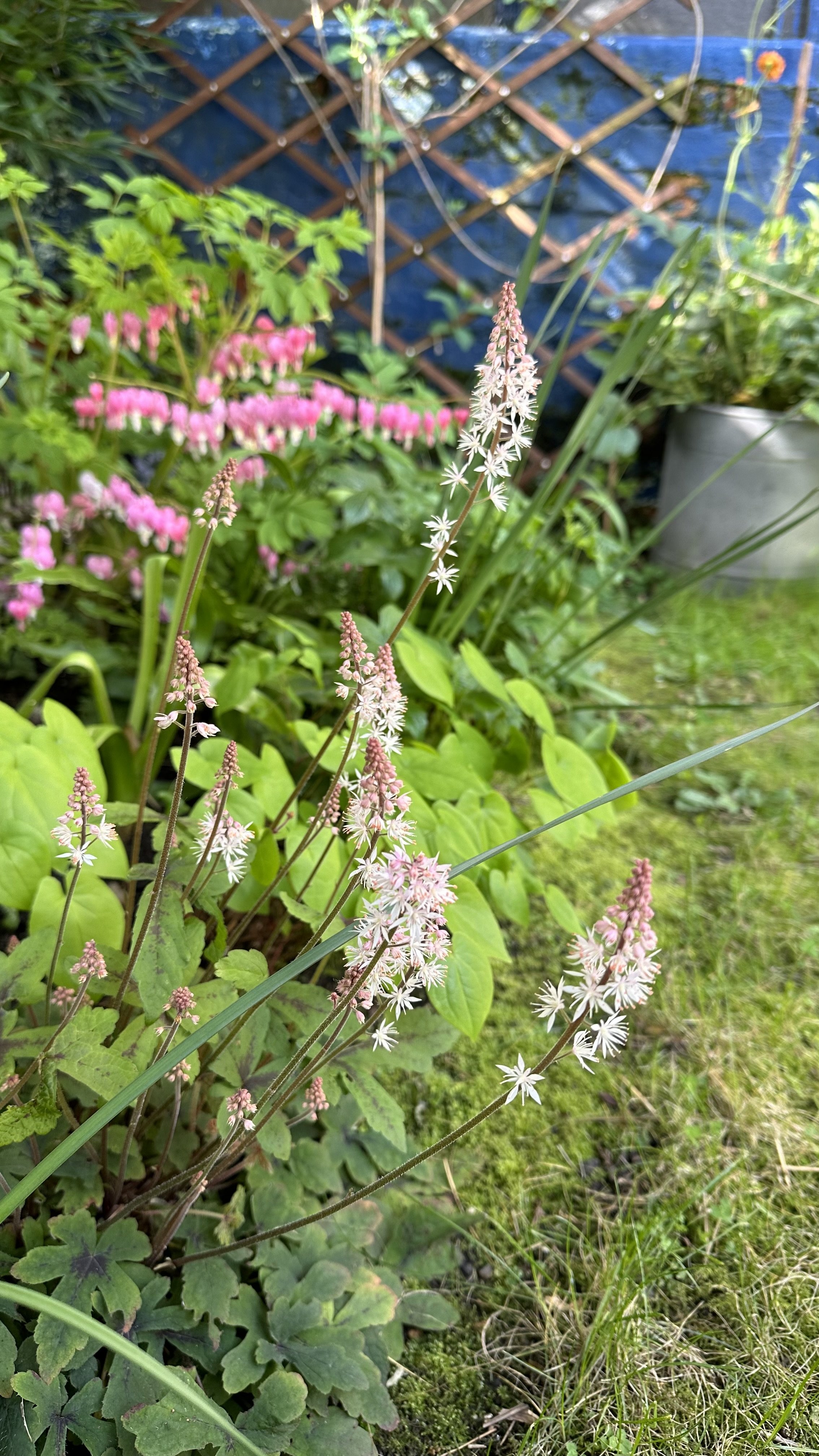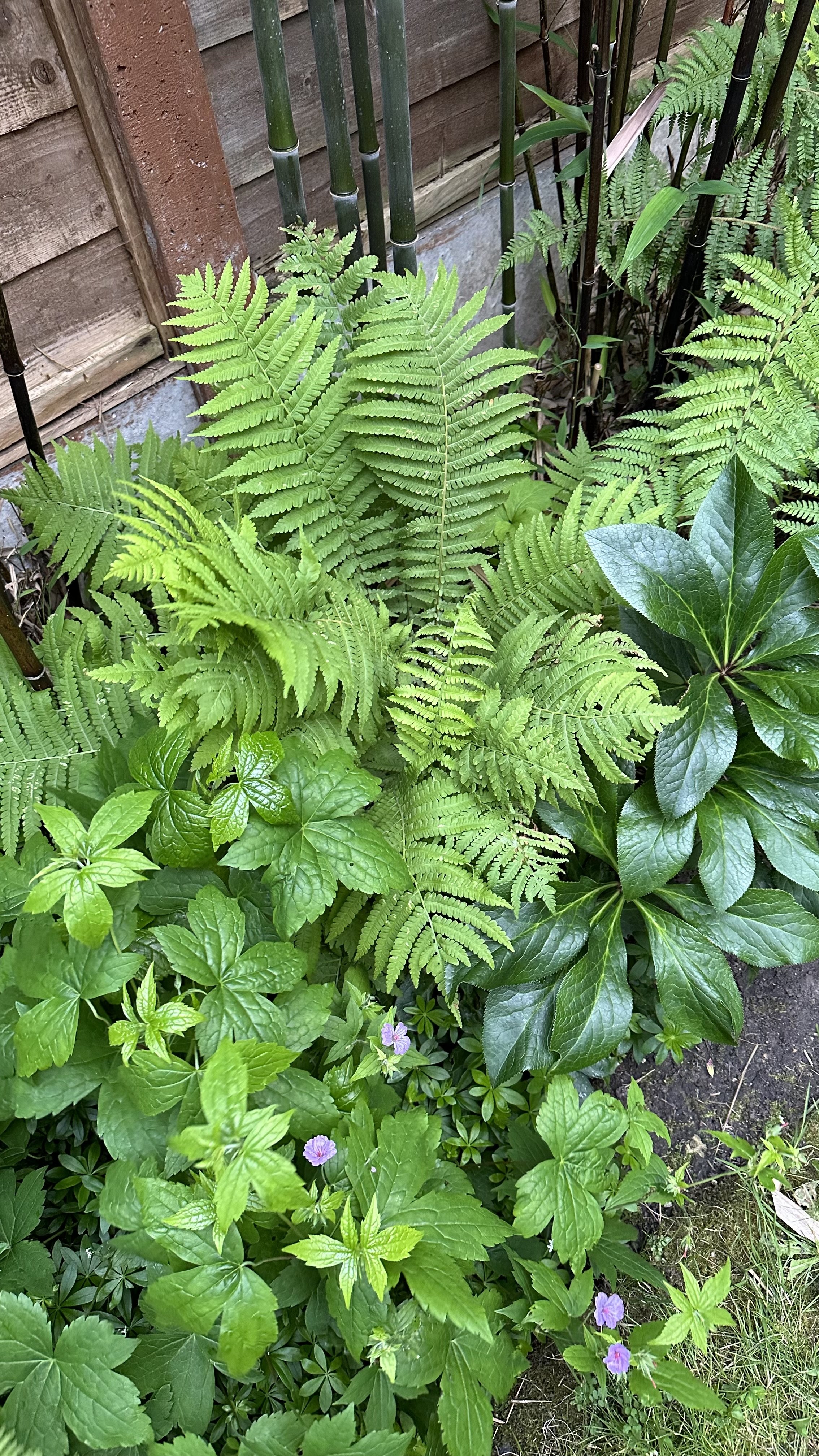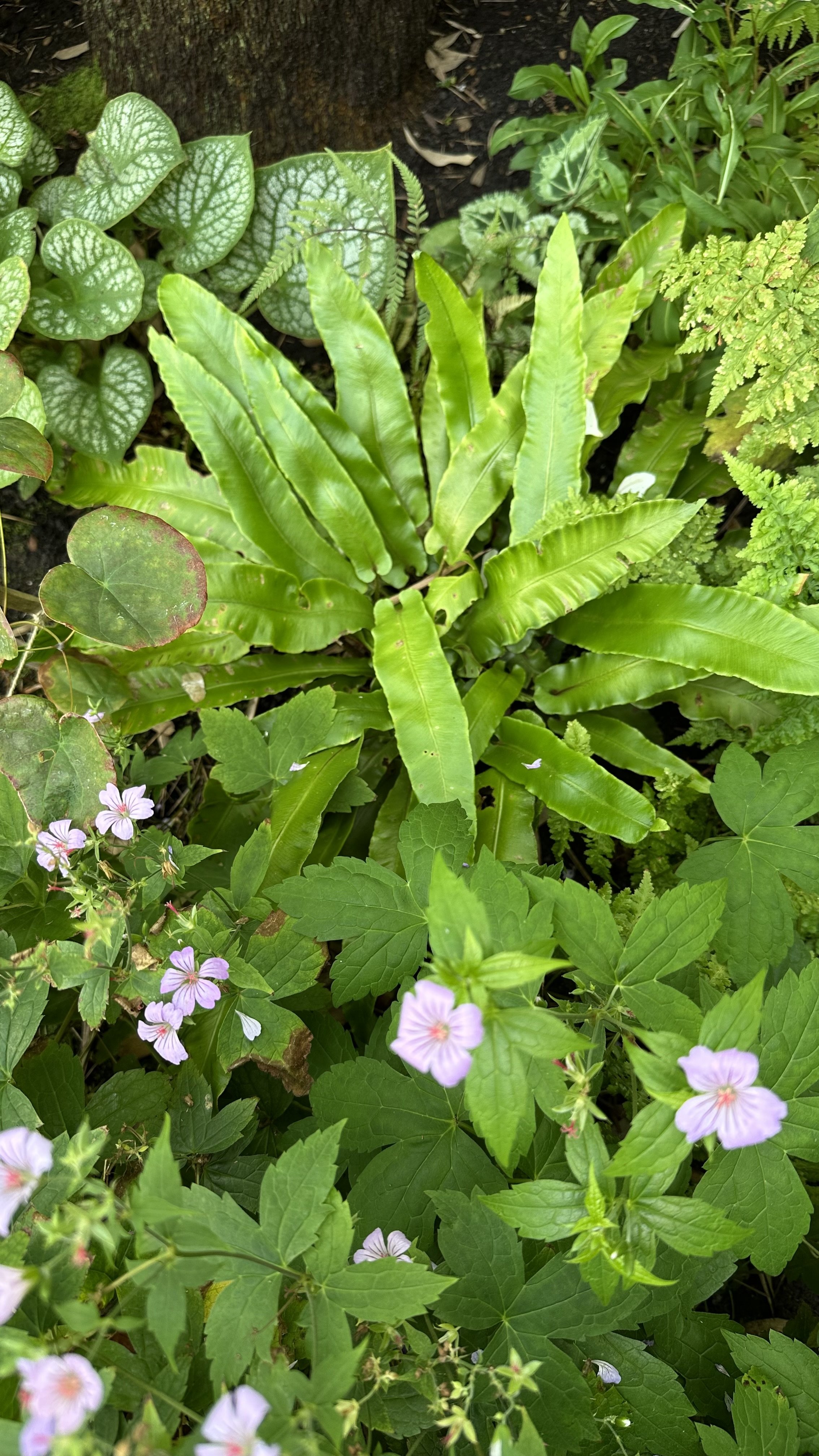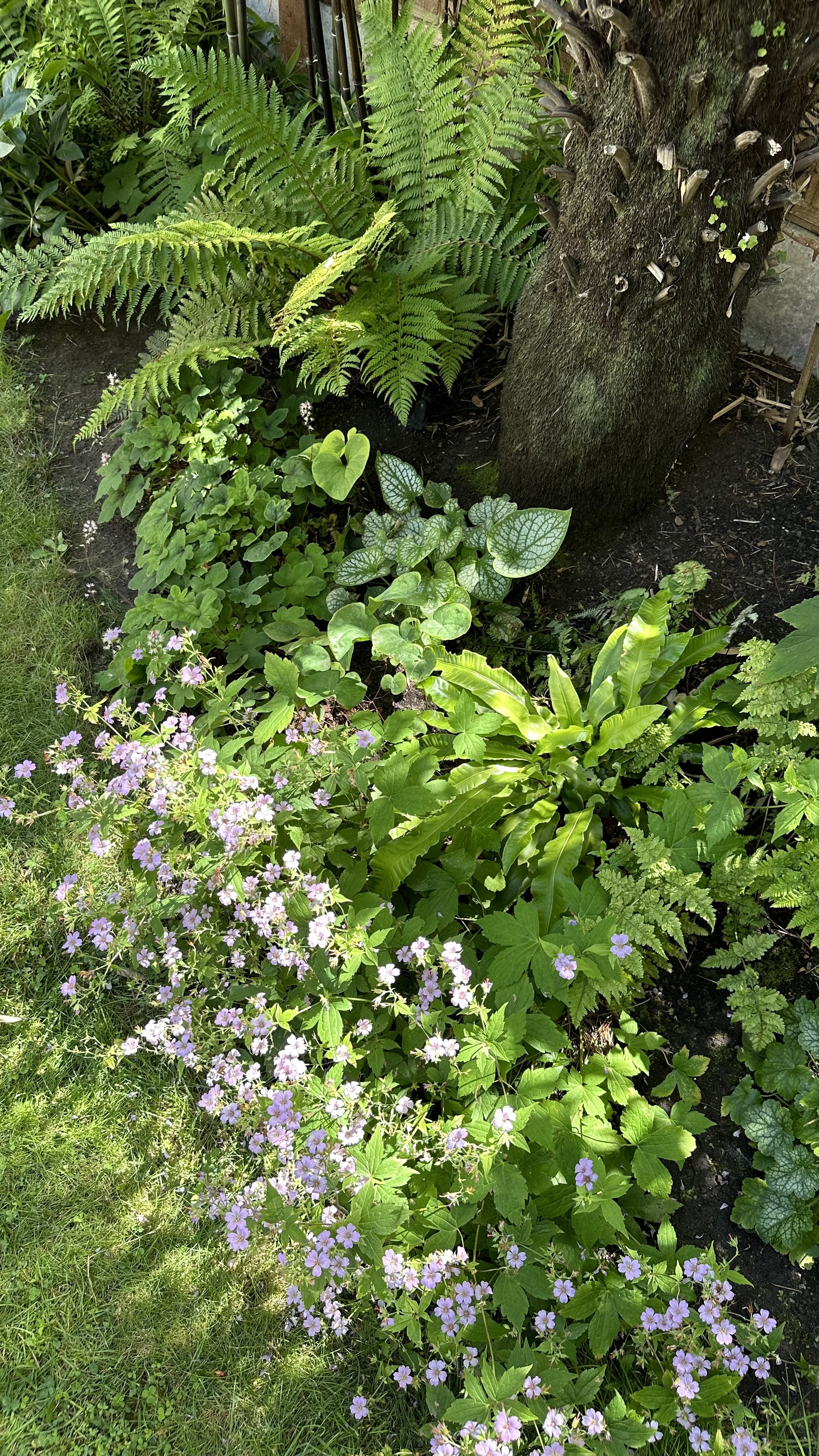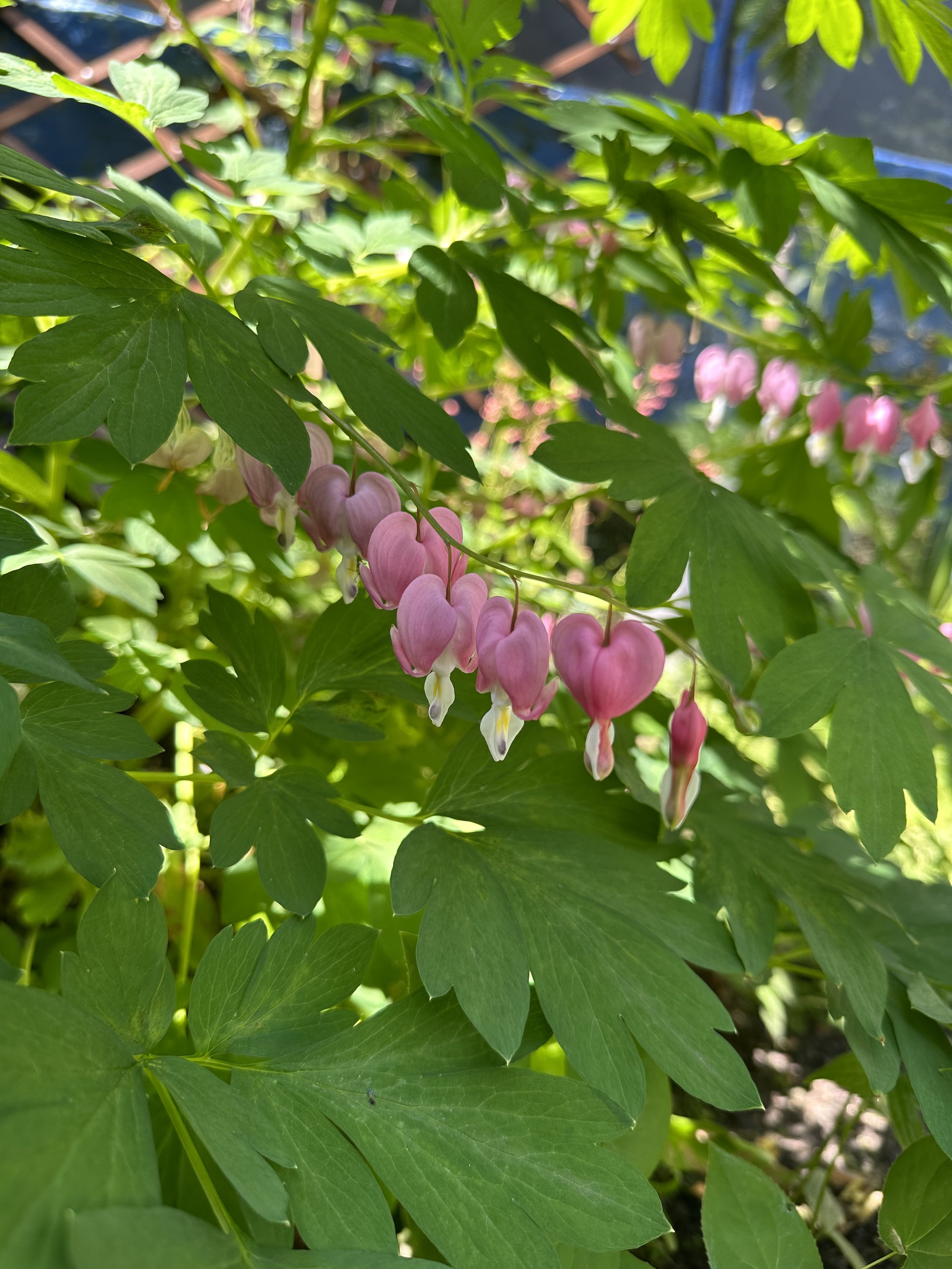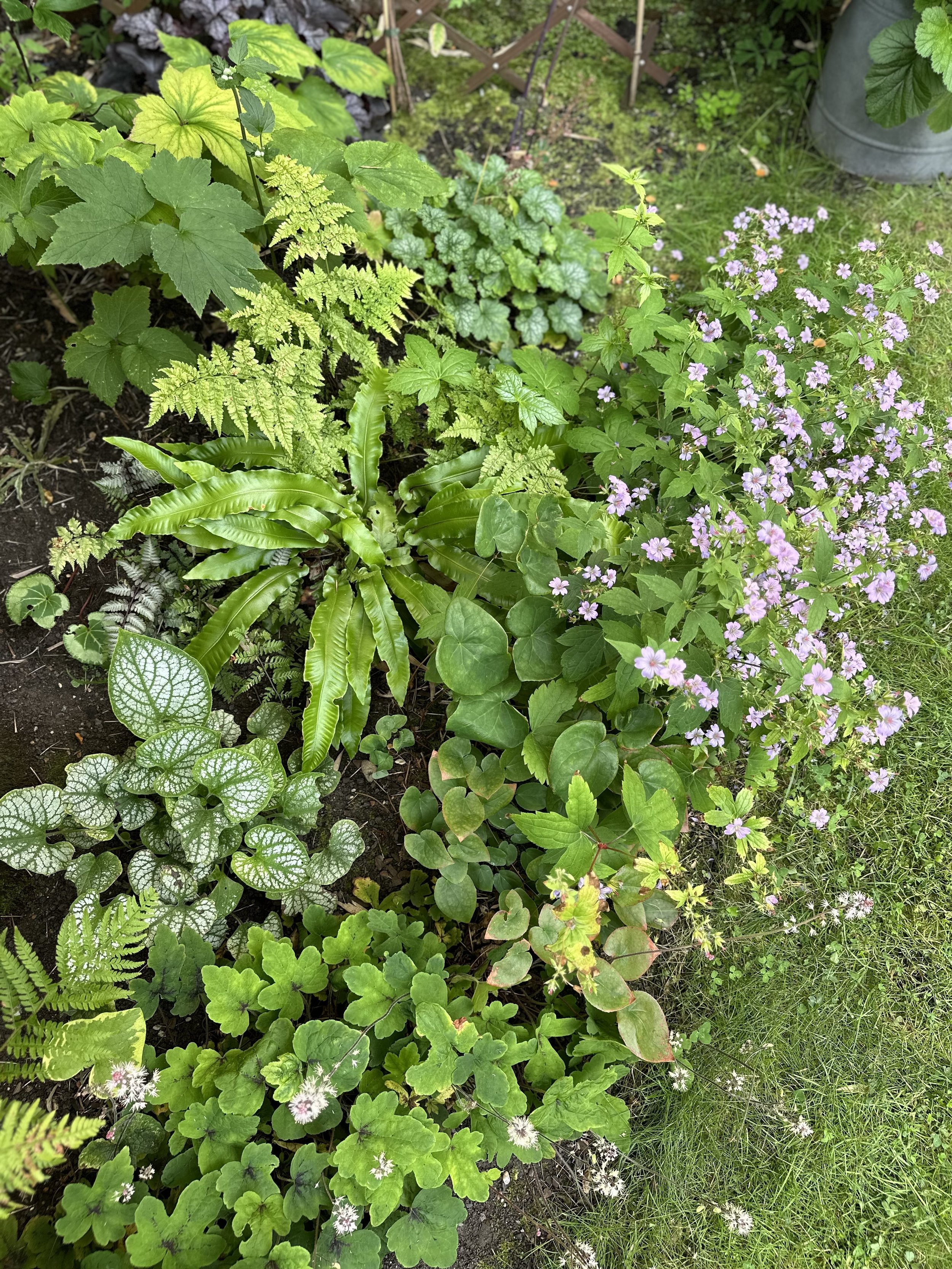The Best Low Maintenance Shade Plants
This website is reader-supported - thank you! This post may contain affiliate links. As an Amazon Associate, I earn from qualifying purchases at no extra cost to you.
Many gardeners seek low maintenance perennials that allow them to cultivate a beautiful oasis without the constant upkeep.
Imagine a garden where low maintenance plants seamlessly blend with nature, requiring minimal attention yet flourishing season after season.
If you're envisioning such a haven, a shade garden plan might be your ideal solution.
These gardens primarily consist of low maintenance perennial selections, perfectly adapted to less sunlit spaces.
From resistant shade plants that can fend off pests to shade-loving plants that thrive without a constant beam of sunlight, the choices are abundant.
Whether you're considering lush ground cover to blanket the earth or ornate plants with vibrant green leaves, understanding the world of maintenance plants is essential.
Join us as we delve deeper into this realm, exploring the beauty of shade-loving plants and the myriad benefits of incorporating these plants into your personal green space.
To learn more about gardening in shade, check out my guides:
The Top 7 Low Maintenance Shade Plants
Incorporating low-maintenance plants in your shade garden not only minimizes upkeep but also ensures a beautiful landscape throughout various seasons.
Here are the top seven low-maintenance shade plants that I recommend:
Coral Bells (Heuchera):
Known for their vibrant foliage that ranges from deep purples to bright greens. They produce small bell-shaped flowers but are mostly grown for their colorful leaves.
Prefers well-draining soil and benefits from occasional deadheading.
Here is my recommended pick Coral Bells 'Black Sea':
Check out my guide:
Bleeding Heart (Lamprocapnos spectabilis):
Recognized by its unique heart-shaped flowers, this perennial adds a touch of romance to any shade garden.
Requires well-draining soil and should be pruned after flowering to maintain shape.
To learn more, check out my guide: How to Grow Bleeding Heart.
Here is the Bleeding Heart I recommend:
Hosta:
With broad, attractive leaves, hostas come in various colors, including blues, greens, and variegated varieties. They also produce tall flower spikes in the summer.
Thrives in moist but well-draining soil. Keep an eye out for slugs, which are attracted to their leaves.
Learn more about caring for hostas with my guides: How to Grow Hostas from Seed and Hosta Care in Winter to Ensure Springtime Splendor.
Here is the hosta I recommend:
Ferns:
Ferns provide a delicate texture to the garden with their feathery fronds. Perfect for creating a woodland ambiance.
Most ferns love damp conditions. Ensure they have consistent moisture, especially in dry conditions.
Here is my recommended fern pick:
Astilbe:
Producing feathery plumes in colors ranging from white and pink to red and purple, astilbes bring both texture and color to a shade garden.
Prefers moist soil. Ensure it doesn't dry out, especially in hot weather.
Here is my recommended Astilbe pick 'Rheinland':
Lungwort (Pulmonaria):
An early spring bloomer, lungwort offers spotted foliage and flowers that change color as they mature, usually from pink to blue.
Enjoys rich, well-draining soil and can benefit from occasional deadheading.
Here is my lungwort recommended pick:
Japanese Forest Grass (Hakonechloa macra):
A graceful ornamental grass that adds movement and softness to shaded areas. Its golden or variegated leaves shimmer in the slightest breeze.
Prefers consistently moist soil and can be pruned in early spring to encourage fresh growth.
Here is the Gold Japanese Forest Grass I recommend:
What is a Shade Garden?
A shade garden, as the name implies, is a landscape designed primarily for spaces that receive limited direct sunlight.
Whether naturally occurring due to the presence of trees and structures or intentionally created, shade gardens can be both a challenge and an opportunity.
Here's what you need to know:
Understanding Levels of Shade:
Full Shade:
These are areas that see no direct sunlight but might receive some diffused light during the day.
Contrary to belief, 'full shade' doesn't mean total darkness. Plants here still receive ambient light, just not direct sun rays.
Partial Shade (or Part Shade):
This refers to areas that get direct sunlight for a few hours, usually in the early morning or late afternoon.
It's a transitional zone, and many plants that are labeled as 'partial shade' can tolerate a mixture of sun and shade.
Dappled Shade:
As poetic as it sounds, dappled shade is where sunlight filters through open canopies, creating a 'dappled' pattern on the ground.
This type of shade is common under lightly spaced trees like dogwoods.
Why Opt for a Shade Garden?
Cooler Temperatures:
Shade gardens can be a retreat during the hot summer months.
They provide cooler areas for relaxation and are often more comfortable to work in, compared to sunny patches.
Moisture Retention:
Generally, shaded areas tend to retain moisture better than their sun-drenched counterparts.
This can mean less frequent watering and a consistent environment for moisture-loving plants.
Unique Plant Variety:
There are numerous plants that thrive in shade and produce beautiful foliage and flowers.
By focusing on a shade garden, one can explore a unique set of plants that might be overlooked in a traditional sun garden.
Aesthetic Appeal:
A shade garden can provide a serene and calming atmosphere.
The play of light and shadows, combined with the cool ambience, can create a tranquil retreat in one's yard.
Challenges of a Shade Garden:
Limited Plant Choices:
While there are plenty of shade-loving plants, there's no denying that sun-loving plants offer a broader palette of colors and sizes.
Overcoming this challenge requires research and sometimes a bit of trial and error.
Soil Quality:
Areas under trees can sometimes have compacted or nutrient-poor soil since large trees can compete for nutrients.
Enriching the soil and ensuring good drainage can help address this.
Pests and Diseases:
The cooler and moister environment of a shade garden can sometimes be a breeding ground for pests and diseases.
Regular checks and preventive measures can keep these at bay.
Benefits of a Low Maintenance Shade Garden
Creating a shade garden that requires minimal upkeep isn't just about making gardening easier; it's also about crafting a space that complements the natural environment and serves multiple purposes.
Here are some compelling benefits of establishing a low-maintenance shade garden:
Conservation of Resources:
Water Savings:
Low-maintenance shade gardens, by design, are tailored to thrive with minimal intervention.
Plants adapted to shade generally require less water than those in sunlit areas, leading to significant water conservation.
Reduced Use of Chemicals:
Since the focus is on hardy, resilient plants, there's often a decreased reliance on pesticides and fertilizers.
This not only saves money but is also kinder to the environment.
Supporting Biodiversity:
Habitat Creation:
Many shade-loving plants are native to specific regions, making them an ideal habitat for local wildlife.
Birds, beneficial insects, and even small mammals may find refuge in a shade garden.
Increased Variety:
Contrary to popular belief, shade gardens can host a wide variety of plants.
From ferns and mosses to flowering perennials, the diversity can be quite surprising and fulfilling to observe.
Enhanced Aesthetics and Property Value:
Year-Round Interest:
With the right choice of plants, a shade garden can offer visual interest throughout the year.
Spring flowers, lush summer foliage, autumn colors, and even winter silhouettes can make the garden a focal point.
Boosted Property Value:
Well-maintained gardens can enhance curb appeal and potentially increase property value.
The charm of a shade garden can be a selling point for potential home buyers, especially those looking for tranquil outdoor spaces.
Therapeutic Benefits:
Relaxation and Mental Wellbeing:
The serene environment of a shade garden can be a sanctuary for many.
The cooling effect, the soft play of light, and the gentle rustling of leaves can offer a peaceful retreat from daily stressors.
Physical Health:
Working in a garden, even one that's low maintenance, provides physical activity.
The tasks, though minimal, can help improve flexibility, strength, and even cardiovascular health.
Sustainability and Adaptability:
Climate Resilience:
Shade gardens, especially those with native plants, tend to be more resilient to changing weather patterns.
Their low maintenance nature ensures they can weather occasional neglect or unforeseen conditions.
Flexible Design:
Given their adaptability, shade gardens can fit into various landscapes.
From under sprawling trees to the shaded sides of buildings, they can be molded to thrive in diverse settings.
Planning for Different Hardiness Zones
Gardening isn't a one-size-fits-all endeavor. The success of your plants depends greatly on understanding the climatic conditions of your specific area. Enter the concept of hardiness zones, a crucial tool to guide your plant choices.
Here’s how you can effectively plan for different hardiness zones:
What are Hardiness Zones?
Hardiness zones, often referred to as planting zones or growing zones, are geographically defined areas that delineate specific climate conditions relevant to plant growth and survival.
They give an indication of the minimum temperatures a region can get, helping gardeners choose plants that can thrive in their local climate.
Factors Influencing Hardiness Zone Designation:
Temperature Extremes:
The primary factor that defines a zone is its average annual minimum temperature.
Altitude:
Higher altitudes can have cooler temperatures and may impact plant hardiness.
Proximity to Large Bodies of Water:
Oceans, large lakes, or seas can moderate temperatures, making areas warmer in winter and cooler in summer.
Wind Patterns & Currents:
Prevailing winds can influence moisture and temperature.
How to Plan for Your Zone:
Know Your Zone:
Before purchasing any plants, it's essential to know your hardiness zone.
This information is readily available on interactive maps provided by agricultural or horticultural departments.
Plant Selection:
When choosing plants, especially perennials, ensure they are suitable for your zone.
Plant tags or descriptions often state the range of zones where the plant can thrive.
Microclimates:
Be aware that within your garden, there might be microclimates – small areas where conditions can differ from the surrounding.
For instance, a sheltered corner might be warmer, allowing you to experiment with plants from a slightly warmer zone.
Adjust Planting Times:
Depending on your zone, you might need to adjust when you plant certain crops, especially annuals.
In colder zones, for instance, you might need to wait longer in the spring to avoid late frosts.
Mulch and Protection:
In borderline zones where a plant might be slightly out of its comfort zone, using mulch can help regulate soil temperature and moisture.
Similarly, for particularly cold snaps, consider using plant covers or frost cloths.
Check out my guide: The Best Alternatives to Traditional Mulch for Your Garden.
Stay Updated:
Hardiness zones can change. With shifts in global climates, zones have been known to adjust.
Regularly consulting updated maps and being aware of changes can help in long-term gardening plans.
Experiment and Observe:
Sometimes, even if a plant isn’t traditionally suited for your zone, it might thrive due to specific conditions in your garden.
While it's good to follow guidelines, don’t be afraid to experiment a bit, especially with inexpensive plants.
Examples of Shade Plants for Various Zones:
Zone 5: Hostas, Coral Bells, and Bleeding Hearts are excellent choices.
Zone 7: Ferns, Astilbe, and Japanese Forest Grass can flourish.
Full Shade Perennials for Various Zones: In zones 5 and 7, plants like Lungwort and certain varieties of Hostas can be suitable.
Shade Garden Perennials VS. Full Sun Perennials
Perennials are plants that have a life cycle of more than two years, contrasting with annuals, which complete their life cycle in just one year.
When deciding which perennials to plant, it's important to consider their light requirements.
Here's a breakdown of the differences between shade garden perennials and full sun perennials:
Shade Garden Perennials:
Adapted to Low Light:
These plants have evolved to thrive in lower light conditions, typically beneath tree canopies, or in the shadow of structures or larger plants.
Varied Foliage:
Many shade-loving perennials are prized for their intricate and colorful foliage, as opposed to just their flowers.
Cool and Moist Environments:
They often prefer cooler, moist conditions and might need protection from hot midday sun, which can scorch their leaves.
Popular Shade Garden Perennials:
Hostas: With varied leaf colors and sizes, these are garden staples.
Bleeding Hearts: Known for their unique heart-shaped flowers.
Ferns: These provide a feathery texture to shade gardens.
Benefits:
Versatile and can fit into many garden designs due to their varied leaf shapes, colors, and sizes.
Generally require less water once established because the shade helps retain soil moisture.
Can help bring life to areas of the garden that might otherwise remain bare.
Full Sun Perennials:
Sun Lovers: These plants require at least 6 to 8 hours of direct sunlight daily.
Drought Resistance: Many full sun perennials have adaptations like deep roots or thick leaves to store water and withstand periods of drought.
Bright Blooms: Full sun often translates to brighter, more vibrant flower colors, as the plants receive ample energy from the sun to produce pigments.
Popular Full Sun Perennials:
Coneflowers (Echinacea): Known for their hardiness and colorful daisy-like flowers.
Check out my guide: The Perfect Partners: Echinacea Companion Planting Guide.
Black-Eyed Susans: Bright yellow petals surrounding a dark center make them garden favorites.
Lavender: Fragrant and drought-tolerant, they add both scent and color.
Benefits:
Can handle the heat and intense sun, making them ideal for open spaces without much shade.
Typically more drought-resistant, requiring less frequent watering.
Often produce vibrant flowers that attract pollinators like bees and butterflies.
FAQs
What's the difference between "full shade" and "partial shade?"
Full shade areas receive no direct sunlight, while partial shade areas get some sunlight, especially during the morning or late afternoon.
Are "low shade indoor plants" similar to outdoor shade plants?
While there are similarities, indoor plants usually require different care due to the controlled environment they're in.
How often should I water my shade-loving plants?
It varies based on the plant, but generally, shade plants need less water than those in full sun since they lose moisture slower.
Can I mix "low sun perennials" with "full shade perennials?"
Yes, but ensure they have similar water and soil needs. Grouping them based on requirements makes maintenance easier.
What's the relevance of the "thrifty and thriving" approach in shade gardening?
It's about making the most of what you have. Even in shaded areas, with the right plants and care, you can create a lush, thriving garden on a budget.
Shade gardens can be a testament to nature's ability to thrive in diverse conditions. With the right shade-loving plants, and by keeping our guide's tips in mind, your garden can become a low maintenance sanctuary of beauty.
Whether it's the vibrant foliage of the coral bells or the iconic look of bleeding hearts, there's a plant out there that's perfect for your shaded space.
For more tips and inspiration for your shade garden, check out my guides:



